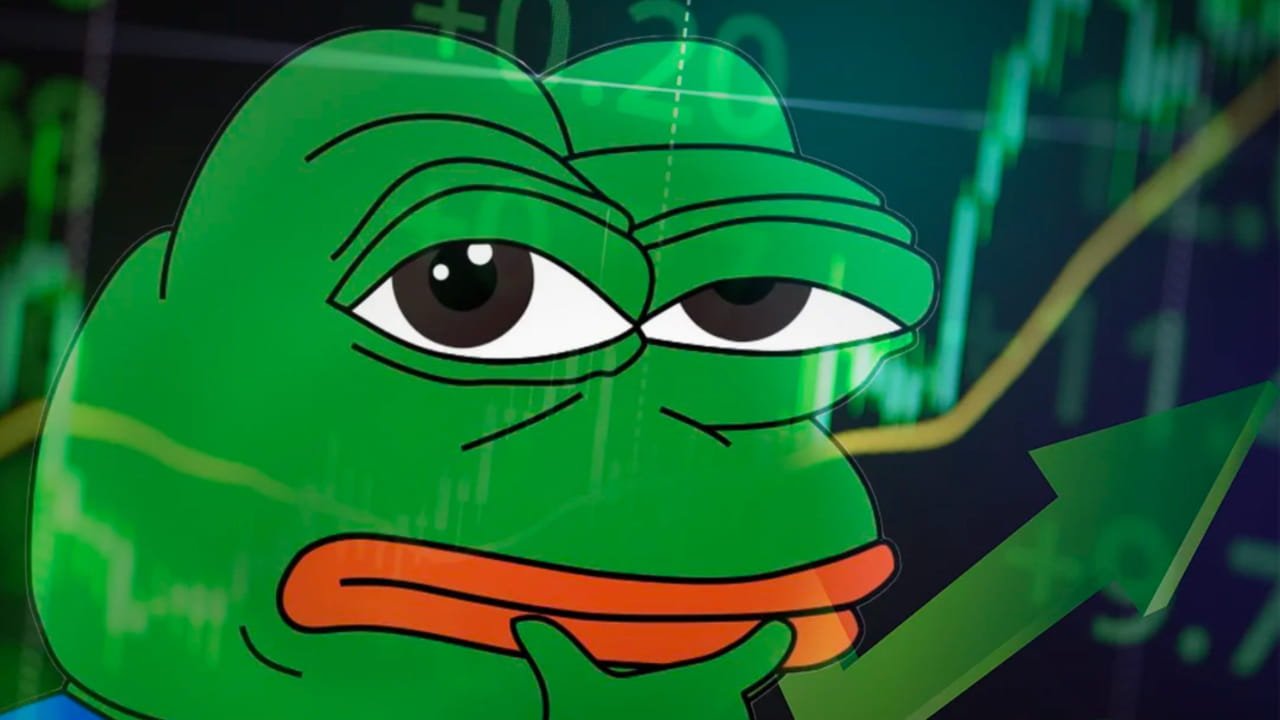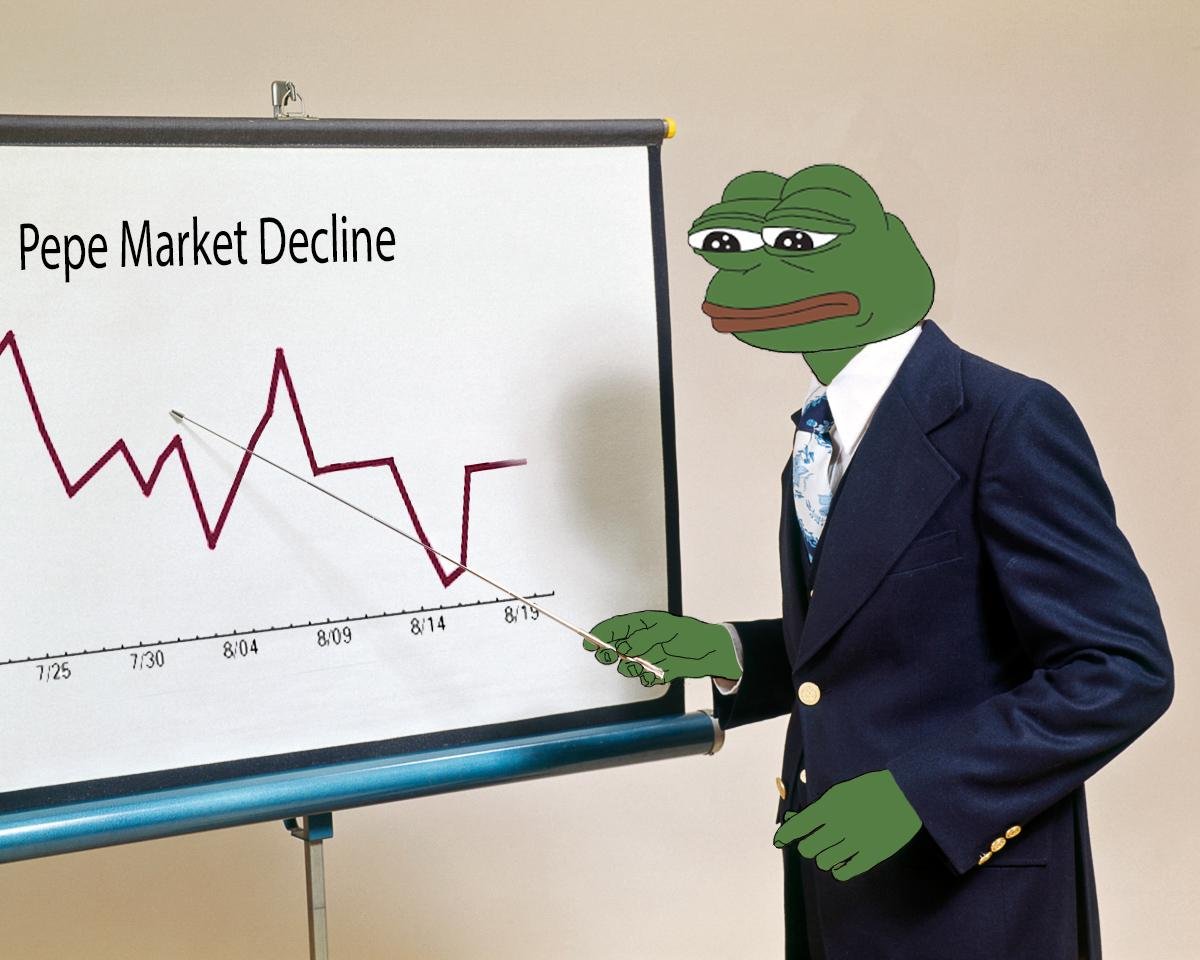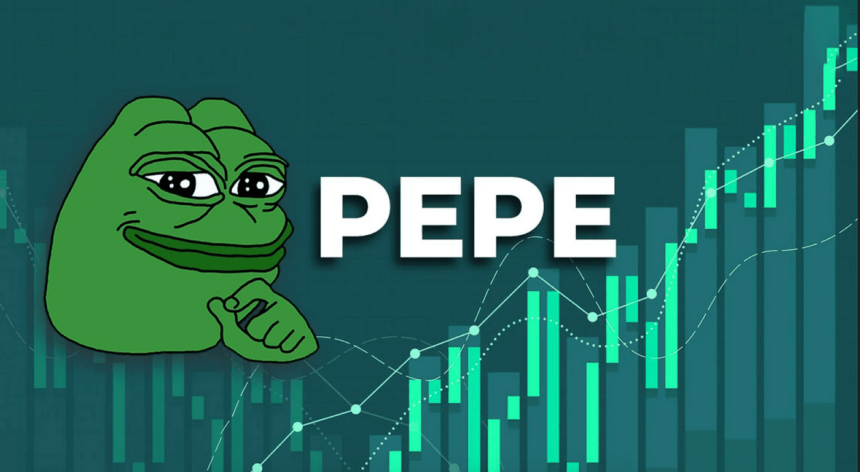Once enjoying viral popularity, PEPE, a meme coin, is having significant difficulties as its price dropped by 42%. Originally well-liked alongside other joke coins like Dogecoin (DOGE) and Shiba Inu (SHIB), the cryptocurrency is undergoing significant deleveraging. The ramifications of this extreme drop are causing investors to struggle; many are left wondering what prompted this dramatic drop and what PEPE has in store. The elements causing PEPE’s decline and more general consequences for meme coins. This paper investigates the erratic Bitcoin market.
PEPE The Rise of a Meme Coin
Inspired by the venerable Pepe the Frog meme, a symbol extensively used on the internet, PEPE started as a meme coin. Like many other meme currencies, PEPE first drew investors because of its low entrance price and the possibility of substantial speculative gain. It became popular in internet forums, especially on sites like Reddit and Twitter, where viral trends and memes may influence market behavior.
Early in its life, PEPE’s price shot higher. The token shot to fame thanks to community-driven buzz, enormous trade volumes, and passionate endorsement from influencers. Seeing it as the next major meme coin following the success of Dogecoin and Shiba Inu, investors were hopeful about its development possibilities. PEPE attracted interest from retail traders and crypto aficionados as its popularity grew, attracting capital and raising its market value. The meme currency market is naturally erratic, so PEPE’s path would not go indefinitely upward.
PEPE’s 42% Decline Deleveraging Impact
PEPE has lately seen a dramatic decline; its price dropped by 42%. Since this abrupt drop marks a moment of significant deleveraging in the PEPE market, analysts and investors are growing worried. Deleveraging is the process by which investors use highly leveraged or speculative assets or positions to lower their risk. Regarding PEPE, the deleveraging process is connected to a market correction. When speculative buying is too strong, it causes a notable unwinding of positions.

As PEPE did during its ascent, a cryptocurrency or asset experiencing a notable price increase often draws traders who assume more risk by borrowing money or using their positions. These investors must sell off their assets to cover their bets when the price starts falling, aggravating the price drop. This downward cycle resulting from selling pressure can be partially ascribed to the deleveraging effect of PEPE’s 42% decline.
Price adjustments are not unusual for meme coins like PEPE, which flourish on speculating and viral buzz. These assets are speculative and more sensitive to abrupt market changes. The effects could be severe when an investor’s mood changes.
PEPE’s Decline Market and Regulatory Factors
Although PEPE’s depreciation can mainly be ascribed to its deleveraging, more general market factors also contribute to the token’s drop. Major coins like Bitcoin at $98K (BTC) have struggled to overcome essential resistance levels, so the Bitcoin market has seen significant volatility lately. This more general market uncertainty has produced a challenging climate for speculative assets like meme coins. They typically rely on market sentiment and hype to drive their value.

As the bitcoin market has calmed, many investors have focused on more established assets, notably Bitcoin and Ethereum (ETH), which are considered safer investments. This has lessened the demand for risky assets like PEPE, influencing the token’s price. Furthermore, speculative investments in meme coins suffer most when the general market declines since traders leave these positions in favor of less erratic assets.
Moreover, the more prominent Bitcoin market has faced regulatory ambiguities, especially in the United States. Stiffer rules and government inspection might create uncertainty that makes investors reevaluate their exposure to high-risk assets. In PEPE, the deleveraging impact partially reacts to macroeconomic events; traders minimize their losses and expose themselves less to assets vulnerable to more regulatory difficulties.
PEPE The Role of Investor Sentiment in Price Decline
Meme coins—including the I character—are naturally speculative investments. Social media trends, online community support, and viral events rather than inherent utility or technological innovation drive their worth. Although this causes fast price rises, meme coins are vulnerable to abrupt declines.
Investor emotions greatly influence meme coin price fluctuation. Often spurred by social media influencers and online communities, the fear of missing out (FOMO) can cause a spike in purchase behavior. But after the buzz fades, investors fearing losses and selling off their assets in panic could cause the reverse reaction. Meme coins are unique in their cycle of buying and selling based on sentiment rather than fundamentals; PEPE is not an exception either. PEPE is in a significant deleveraging period; hence, its price reduction most likely comes from changing investor mood.—a major significantrresultordinary investors that had crowded PEPE reevaluating their investments.
PEPE’s Future Risks and Speculative Nature
Investors wonder whether PEPE’s major deleveraging event marks a passing phase or indicates more underlying problems. Meme Coins Bubble’s speculative character always makes a recharacterize, particularly if social media trends point PEPE’s way. Meme currencies are prone to cycles of excitement and correction; hence, PEPE might see another boom should the community gather momentum.
PEPE’s future is questionable since its lack of intrinsic worth requires consideration. Though their long-term viability is sometimes questioned, meme coins might show short-term benefits depending on viral phenomena. Unlike Bitcoin or Ethereum, which have developed use cases and technology bases, PEPE offers no actual value beyond speculation.
Investors should exercise caution when navigating the erratic terrain of meme currencies. The 42% decline in PEPE’s price sharply reminds us of the hazards of trading speculative assets. Although the coin might bounce back temporarily, its long-term future is unknown. Hence, investors should carefully consider the hazards before making further investments.









